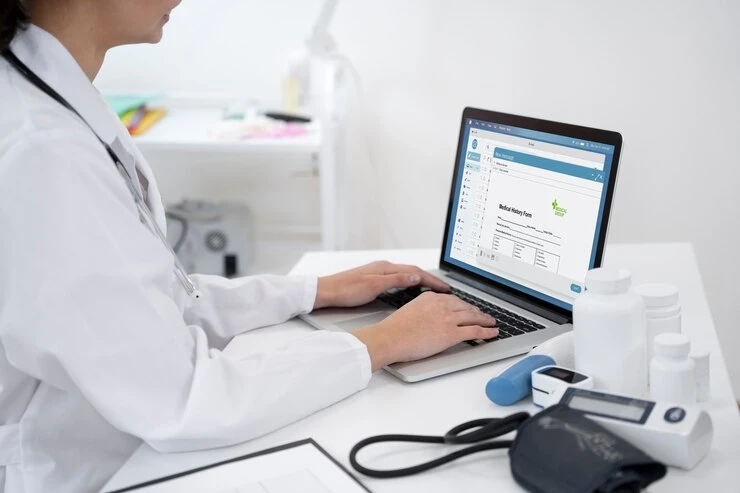In recent years, remote patient monitoring software development (RPM) has emerged as a pivotal component of the healthcare landscape in the USA. Leveraging advanced technology to monitor patients' health outside traditional clinical settings, RPM offers a promising solution to many of the challenges faced by the healthcare industry. This blog delves into the growth of RPM, its benefits, and the challenges that must be addressed to fully realize its potential.
The Rise of Remote Patient Monitoring
The adoption of RPM has accelerated dramatically, driven by several factors. The COVID-19 pandemic played a significant role, highlighting the need for remote healthcare solutions to reduce the risk of virus transmission and manage the surge in patient numbers. Technological advancements, including the proliferation of smartphones, wearable devices, and sophisticated health monitoring tools, have made it easier to implement and scale RPM solutions. Additionally, regulatory changes and increased reimbursement options from insurers have made RPM more financially viable for healthcare providers.
Benefits of Remote Patient Monitoring
Improved Patient Outcomes
RPM enables continuous monitoring of patients with chronic conditions, allowing for timely interventions and adjustments to treatment plans. This proactive approach helps prevent complications and hospital readmissions, ultimately leading to better patient outcomes. Patients with conditions such as diabetes, hypertension, and heart disease can benefit significantly from RPM by maintaining better control over their health.
Enhanced Access to Care
For patients in rural or underserved areas, access to healthcare can be a significant barrier. RPM bridges this gap by allowing healthcare providers to monitor patients remotely, reducing the need for frequent in-person visits. This increased accessibility ensures that more patients receive the care they need, regardless of their geographic location.
Cost Savings
By reducing the number of hospital visits and preventing complications, RPM can lead to substantial cost savings for both patients and healthcare providers. Early detection of potential health issues through continuous monitoring can avoid expensive emergency room visits and hospitalizations. For healthcare systems, this translates to more efficient resource utilization and reduced overall healthcare costs.
Patient Engagement and Satisfaction
RPM empowers patients to take a more active role in managing their health. With real-time data and feedback, patients can make informed decisions about their lifestyle and treatment plans. This increased engagement often leads to higher patient satisfaction and better adherence to prescribed therapies.
Challenges of Remote Patient Monitoring
Data Security and Privacy
The collection and transmission of health data through RPM systems raise significant concerns about data security and privacy. Ensuring that patient information is protected from breaches and unauthorized access is paramount. Healthcare providers and technology developers must implement robust security measures and comply with regulations such as HIPAA to safeguard patient data.
Integration with Existing Systems
Integrating RPM solutions with existing electronic health record (EHR) systems can be complex. Seamless integration is crucial for ensuring that healthcare providers have a comprehensive view of patient health data. Interoperability standards and collaboration between technology vendors and healthcare organizations are essential to address this challenge.
Patient and Provider Adoption
While RPM offers numerous benefits, its success depends on the willingness of both patients and healthcare providers to adopt and use the technology. Patients may be hesitant to embrace new technology, especially older adults who may not be tech-savvy. Similarly, healthcare providers need training and support to incorporate RPM into their practice effectively.
Reimbursement and Regulatory Issues
Although progress has been made in terms of reimbursement for RPM services, navigating the complexities of insurance and regulatory requirements can still be challenging. Clear guidelines and standardized reimbursement policies are necessary to encourage broader adoption of RPM.
Conclusion
The growth of remote patient monitoring software development in the USA represents a significant advancement in healthcare delivery. With its potential to improve patient outcomes, enhance access to care, reduce costs, and increase patient engagement, RPM is poised to become an integral part of the healthcare ecosystem. However, addressing the challenges of data security, system integration, adoption, and reimbursement is crucial to fully harness the benefits of RPM. As technology continues to evolve and the healthcare landscape shifts, RPM will play an increasingly vital role in shaping the future of patient care.
Further, check the details on The Essential Guide to Hiring Healthcare Software Developers


